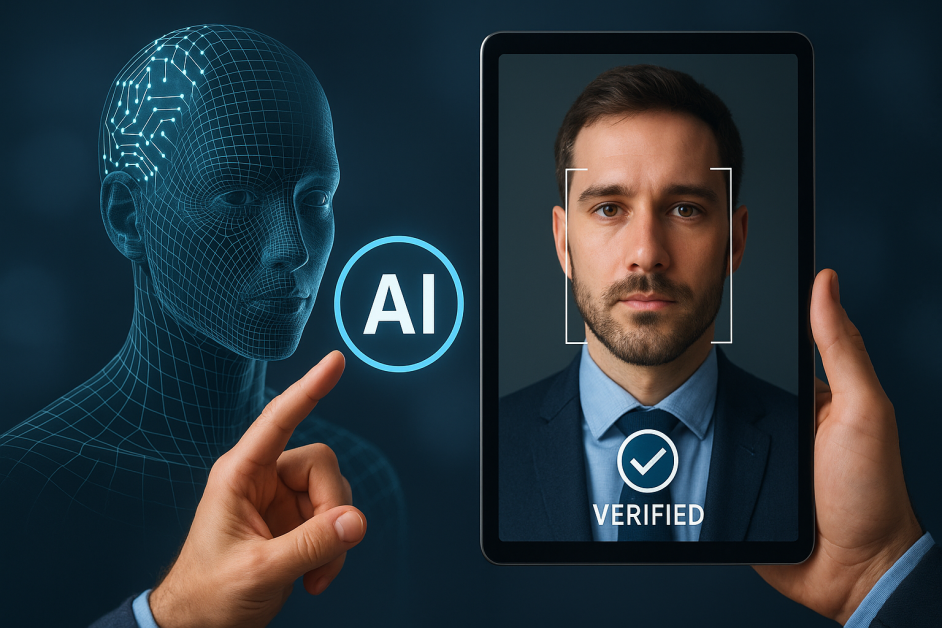Thought Leaders
Agentic AI’s “Personal Digital Doubles” Will Require an Identity Verification Evolution

Amazon’s announcement of its “Buy for Me” feature was a bold move signaling the real potential of agentic AI in e-commerce. By enabling AI agents to seamlessly purchase products directly from other websites when those items aren’t available on Amazon, the company is positioning itself as the premier purveyor of highly convenient and fulfilling shopping experiences.
Agentic AI – where autonomous agents act on behalf of real users – is on track for rapid enterprise adoption, particularly in a B2B context. Imagine a world where “B2B AI agents” operating in various capacities (such as customer service, sales, supply chain, IT operations, finance, and HR) can take action on more mundane enterprise tasks without human intervention.
Agentic AI is also welcome news in the consumer realm, with “B2C AI agents” offering significant opportunities for consumers to save time and effort in their daily lives. Consider a “buyer agent” that can help online shoppers find the best deals, monitor price drops, automate purchases, handle returns, and make travel bookings. The possibilities across various industries seem endless:
- Personal finance and wealth management – Think of AI agents that can autonomously execute financial strategies, rebalance portfolios, find optimal interest rates for savings, and even manage tax filings.
- Customer service and support (for individuals) – Instead of calling a helpline or chatting with a bot, a personal Agentic AI can communicate directly with a company’s Agentic AI to resolve issues, clarify orders, or make changes. This removes the need for individuals to repeat information or navigate complex IVR systems.
- Healthcare – AI agents will be able to manage appointments, order prescriptions, file insurance claims, and even proactively seek second opinions or analyze medical research on behalf of patients.
Adopting agentic AI offers websites the opportunity to set themselves apart through exceptional user convenience and experiences. However, on the other side of the coin, agentic AI is highly vulnerable to fraud. Research shows that bots compose between 40 and 50 percent of all web traffic, with around 65 percent of these bots believed to be malicious. Agentic AI is essentially a way for regular consumers to use bots, and fraudsters – who often leverage bots in high volume to enable operations at scale – will now have a much easier time hiding in plain sight amidst legitimate agentic traffic.
At a foundational level, the ability to distinguish between these malicious and legitimate bots at scale will be a key factor in distinguishing the leaders in the agentic AI race. In an agentic world, machines will be given agency and will be walking down the same “cyber-aisles” as us humans.
But is the E-commerce Landscape Ready?
Agentic AI will require a rethinking, or an expansion, of the online identity verification framework as it is known today, which in turn will require solution providers to keep getting better at what they’re already doing. To date this framework has been centered on three questions:
- Is this person real? The rapid proliferation of deepfakes is mandating liveness checks for all high-risk transactions, ensuring they are instigated by a real, live person. In the context of agentic AI, the answer may be, “no, I am not a person,” but that does not mean liveness is irrelevant. Liveness detection should always be a part of biometric checks occurring at high-risk points in a user journey, to ensure a human is in the loop – such as when an account is created, money is transferred or account recovery is requested (“I forgot my password”).
- Is this person trusted? This is the ability to determine if the user is a fraudster, a future VIP customer or something in between, which often involves checking against public databases. For example, someone attempting to book lodging on an online rental marketplace would be flagged as high risk if he/she has a known criminal history of squatting or property destruction.
- Is this still the person behind the account? This refers to continuous, perpetual authentication – or making sure at regular intervals that the person whose identity was verified at log-in is still there, preventing account takeover by other humans.
Agentic AI adds a fourth question – does this agent have authority to act as the real user’s proxy? This issue of authority is critical, confirming the scope and duration of the human’s authorization for the AI agent to act as his or her proxy, in accordance with context. This isn’t just about a human delegating a task; it’s about ensuring that an AI agent possesses specific, revocable, context-aware human-derived permissions. All AI agent actions must be traceable to a real, legitimate human; this is the key to B2C sites deploying agentic AI in a safe and accountable way.
According to one recent estimate, AI was behind roughly 20 percent of the fraud perpetrated in 2024 across all sectors, and this figure is only expected to grow as hackers deploy new techniques. Besides malicious AI agents impersonating legitimate ones, another example is agent hijacking, or when an attacker interferes with how an agent perceives information or makes decisions. So in addition to verifying the legitimacy and authority of AI agents, checking the integrity of agents is also critical to ensure they haven’t been tampered with.
Gartner tempered its strong predictions for agentic AI growth overall with an important caveat: over 40 percent of agentic AI projects will be canceled by the end of 2027. This was a stark wakeup call – a sign that many organizations are underestimating the complexity of agentic AI implementations, particularly the need to ensure adequate risk controls. While there are many ways that agentic AI agents can be exploited to cause harm, the ability to verify legitimacy and authority is a baseline, foundational step for minimizing risk. Fortunately, what’s required is not a reinvention, but an evolution—an augmentation of the proven online identity verification frameworks that exist today.






